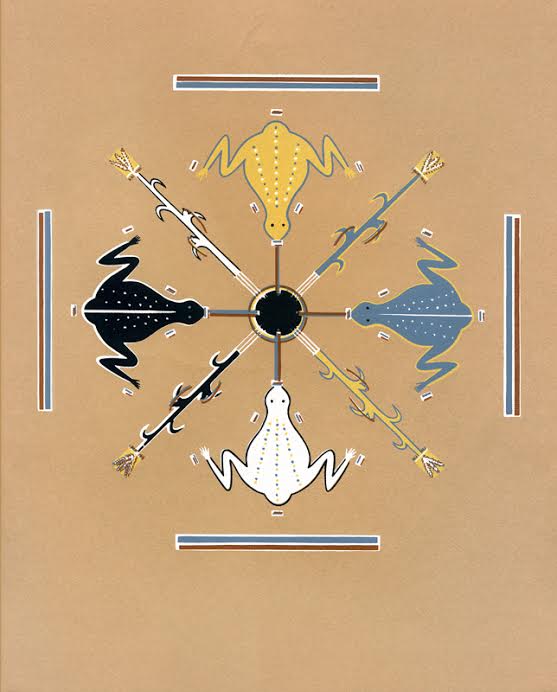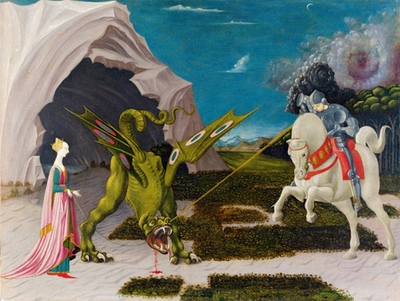ARAS Connections: Image and Archetype - 2016 Issue 3

ARAS is always striving to find better ways to use the treasures we already have in our unique collection. It is easy enough to love the idea of ARAS' preserving and expanding our symbolic collection from all eras and all cultures, but finding new and easier ways to use the collection in a practical way is also on our minds. For some time, we have wanted to include a feature that allows the individual users to collect what interests them most in ARAS.
We have long thought of such a feature as creating a way to “journal” one’s study of symbolic imagery. We have now taken our first major step in creating a tool for this kind of personal journaling with ARAS. Whether you are writing a paper or a book, preparing a lecture, or working on an art or design project, or tracking symbols arising out of your dreams, “My Lists" allows you to keep a running record of the images in ARAS that are most important to you. You can create one or separate collections for all the symbolic images that interest you and arrange them according to the specific topics you are exploring from the vast ARAS collection. Here are some instructions to guide you through using this new feature.
Introduction to the articles from Art and Psyche, Sicily
The following two articles are part of our Art and Psyche series. They were originally presented at the third Art and Psyche conference, which took place in Sicily, 2015. We decided to publish them together since their titles both introduce a perspective of dreaming in art making, they both deal with the mystery revealed in the natural world and seeing art through psyche. Colette, the artist in Sarah Berry Tschinkel’s article creates rich, sensuous visions of her persona. Jennifer Pazienza reflects on her art work through memory and landscapes, inner and outer. For both, beauty is an integral part of their work.
Sarah Berry Tschinkel is a Jungian analyst living in New York City. Jennifer Pazienza is a painter living in New Brunswick, Canada.
COLETTE, A Beautiful Dreamer, The Transformative Persona

“The creative process, so far as we are able to follow it at all, consists in the unconscious activation of an archetypal image, and in elaborating and shaping this image into the finished work. By giving it shape, the artist translates it into the language of the present, and so makes it possible for us to find our way back to the deepest springs of life...” (Jung, v. 15).
I have been fascinated by Colette and her art since writing the text and narrating this program in 1992, twenty-three years ago. As you can see from this excerpt, Colette, herself, conveys the archetypal. I am intrigued by Colette for many reasons… Not only am I a lover of art, but also love all things theatrical-imagination, character, costume, audience and play! But perhaps the most compelling reason I have followed and studied this artist is her relationship to psyche-how she embodies and gives manifest form to psychic contents through the making of her art and, most notably for this presentation, in the creation and dissolution of her personas. Through an inspired blend of autobiography, imagination, personal agency, and spirit, Colette takes the bits and pieces of her life and creates fantastic worlds that she and her personas inhabit. Jung says of the artist, “...The creative urge lives and grows in (her) like a tree in the earth from which it draws its nourishment. We would do well, therefore, to think of the creative process as a living thing implanted in the human psyche...” (Jung, v. 15, p. 75). This idea speaks directly to Colette’s art as a ‘living thing’ in a relationship of reciprocity with psyche- both drawing nourishment from and feeding her at the same time.
As detailed earlier, in this paper I will weave portions of a recent interview with Colette with older clips from the program made in 1992. These excerpts, along with images from her work, will illustrate and amplify my exploration of Colette’s persona as a bridge between inner and outer life- a creative ‘skin’ of sorts that both celebrates and protects her, but can and must be shed, allowing the movement of psyche to be revealed in a continual and fluid relationship between creation and destruction. I will contrast Jung’s understanding of the persona function as mask, both protecting and hiding the ‘real’ self, with the idea of mask as ‘sacred’ bridge to the divine. In addition, I will discuss how Colette’s personas and environments reflect the archetypal energies of Aphrodite in her role of bringing the divine and the earthly together through the cultivation of beauty. And I will conclude with a brief exploration of how the persona function in our culture has evolved, and how Colette’s art presages this evolution.
Read COLETTE, A Beautiful Dreamer, A Transformative Persona in its entirety.
Beautiful Dreamer: Landscape and Memory

Art is dream realized, and this is why we value it—as an earnest that our dreams might be realized in life ~ Wendy Steiner
Before any talk, my First Nations friends and colleagues Dave and Imelda Perley taught me to acknowledge the land and the first peoples who occupied it wherever we are gathered. In Siracusa, it is the Siculi Italici. In New Brunswick, eastern Canada (Fig. 2) where I live it is the Wolastoqewiyik (pronounced, Woo-luss-ta-goog), the place of the beautiful and bountiful river of the Mig’maw and Maliseet peoples. Specifically Keswick Ridge (Fig. 3) the land that greets me each morning and sees me safely to sleep at night—companion to my life and work for nearly 25 years.
Like the brick and mortar that were so fundamental to my grandfather’s trade, in Beautiful Dreamer: Landscape and Memory, images and words, canvas and computer are my materials and tools. Beautiful Dreamer is a privileged site of old and new construction, of continual renovations characterized by layer upon layer of active waiting, breathing through thresholds, imagining and re-imagining possible worlds. It is where I labor, in gratitude, to understand and heal the psychic havoc wrought by early loss, domestic violence and Kantian aesthetics.
Reconstructing or mapping physical artistic processes and psychological experiences—slivers of insight, fragments of living an examined life—can coalesce in myriad ways. For me it is a matter of submitting myself again and again to the intrigue of a kind of hermeneutic hall of mirrors where ideas bounce off brush strokes and swirls of reading paint text. There, divine light illuminates memory and faith stares down doubt. In the air beautiful voices, long overshadowed by fear and anxiety, sing their songs of possibility, while others caution not to mistake pointing to the moon for the moon (Fig. 4).
Read Beautiful Dreamer: Landscape and Memory in its entirety.
New Feature on ARAS Online!

We are pleased to announce that we have added a new feature to ARAS.org! Members are now able to create lists or collections from images within the archive. This feature will be especially useful for those preparing for presentations or for anyone who wants to keep track of their favorite images. Click here to see how it works!
To become a member and have access to this feature, click here.
The Poetry Portal

Dragons intrigue us all, old and young through their monstrous size, their fire breathing gaping mouth, their skin, which reminds us of lizards and snakes. At least this is how they appear in the West where we have a long tradition of having to kill the dragons. In contrast, in most of Asia the dragons are benevolent beings, appearing as thunder clouds, bringing fertility to earth. The poet Rilke had his own idea about dragons as he writes in Letters to a Young Poet: “Perhaps all the dragons in our lives are princesses who are only waiting to see us act, just once, with beauty and courage. Perhaps everything that frightens us is, in its deepest essence, something helpless that wants our love.”
We hope you will be inspired to write a poem about your own dragon for this installment of the Poetry Portal. Please send your poem to poetry@aras.org by December 15, 2016.
A heartfelt thank you to everyone who submitted a poem for the last “Invite to Write,” inspired by the image of Window. It is always a delight and deeply moving to read your poems.
Contents
Become a Member of ARAS!
Become a member of ARAS Online and you'll receive free, unlimited use of the entire archive of 17,000 images and 20,000 pages of commentary any time you wish—at home, in your office, or wherever you take your computer.
The entire contents of three magnificent ARAS books: An Encyclopedia of Archetypal Symbolism, The Body and The Book of Symbols are included in the archive. These books cost $330 when purchased on their own.
You can join ARAS Online instantly and search the archive immediately. If you have questions, please call (212) 697-3480 or email info@aras.org
We Value Your Ideas
As our newsletter grows to cover both the ARAS archive and the broad world of art and psyche, we're eager to have your suggestions and thoughts on how to improve it. Please send your comments to info@aras.org. We look forward to your input and will reply to every message.
Subscribe
If you're not already a subscriber and would like to receive subsequent issues of this newsletter by email at no cost, e-mail us at newsletter@aras.org.
